Cattle with shaggy hair and lean beef are the common traits of Scottish cattle. Surprisingly, a group of these sought-after cows is referred to as a ‘fold’ rather than a herd.
Apart from this information, you’ll be astonished by the various Scottish cattle breeds that you have to distinguish one from another.
These are Scottish cattle breeds:
Whitebred Shorthorn,
Shorthorn,
Belted Galloway,
Angus,
Highland,
Shetland,
Luing,
Red Angus,
Ayrshire, and
Galloway.
Some breeds like Charolais, Caracu, Hereford, Gelbvieh, Piedmontese Cattle, and Brahman Beefmaster have the similar sought-after characteristics of these Scottish cattle breeds.
They seem a lot, but knowing about their appearance and unique traits, it will be much easier to remember each breed. These things will be revealed as you continue reading.
Scottish Cattle | All You Need to Know
Scottish cattle are known for their long, wavy, and woolly coating. They have the longest hair among all cattle breeds. Their coating seems unusual because of two layers.
The outside part is oily, and under it is a downy undercoat. This coating doesn’t only give the cattle a stunning appearance but protection as well.
The cattle’s long hair protects them from winter and flies from getting into their eyes. It’s also the reason why they don’t store more fat like what happens to other breeds.
However, such long hair is not necessary for summer and if the cattle are raised in Southern regions. They’re known as hardy animals since they can withstand the extreme conditions of the Scottish Highlands.
They also have a pair of distinct longhorns. In terms of colors, they can be tan, silver, grey, white, black, ginger, red, dun, brundle, and yellow. The popularity of these cattle comes from their meat that has low cholesterol.
Scottish Cattle Breeds
Whitebred Shorthorn
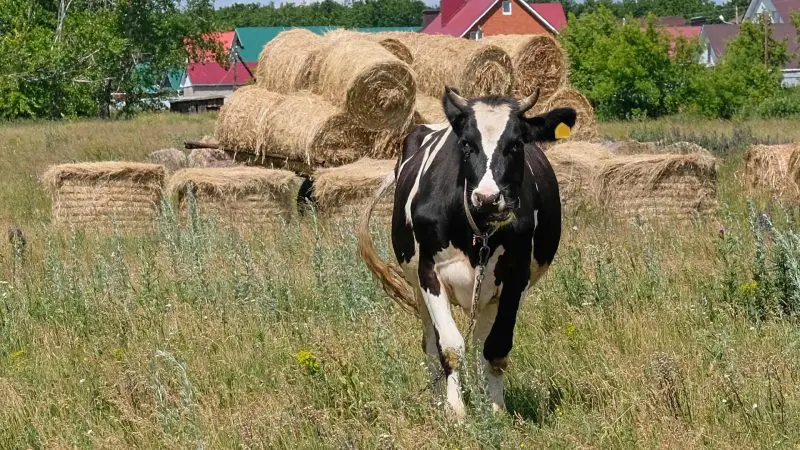
Although this breed is recorded in history as discovered by David Hall, it falls short of accuracy. On the brighter side, it’s hardy since it can survive by just grazing on rank grass or hill pasture.
What sets it apart from other Scottish cattle breeds is its ability to produce milk for a much longer time. However, the amount of milk is not remarkable.
- Appearance: Wide muzzle
- Lifespan: Up to 20 years
- Size: Medium size, 800 kg – 900 kg (bulls), 550 kg – 600 kg (cows)
- Color: White or bluish white
- Characteristics: Hardy, gentle, manageable, easy calving, usually used for breeding purposes
Shorthorn
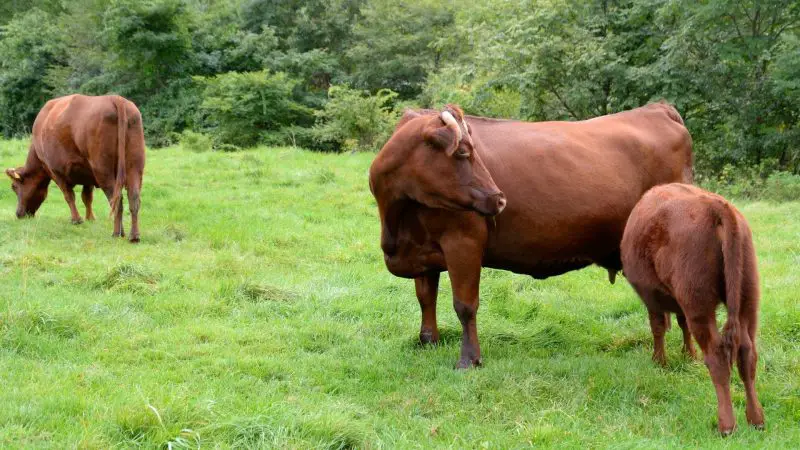
Some may not be familiar with this breed because it may be presented under the name Durham. But the protein content in its milk is impressive. Thus, this breed is in demand in the USA, Argentina, Canada, Uruguay, South Africa, and some European countries.
- Appearance: Short horns, blocky structure
- Lifespan: 17 to 18 years
- Size: 800 kg – 900 kg (bulls), up to 700 kg (cows)
- Color: Black or red or a combination of both colors
- Characteristics: Docile temperament, good mothering ability, high fertility
Belted Galloway
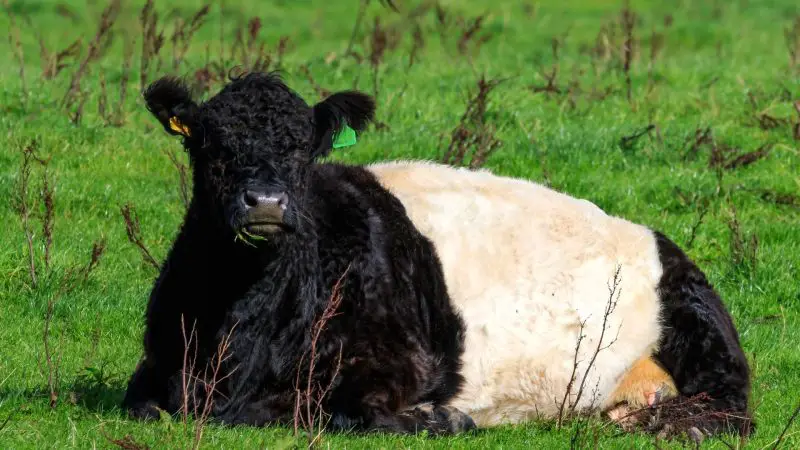
Called Oreo or Belties, these cattle are different from Galloway because of the white belt that encircles around its body.
The recognition of this breed happened in 1921, but the discovery may have happened earlier than the said year. It’s a low-maintenance cow but super fertile. The meat that you can get from it is lean, flavorful, and well-marbled without excessive saturated fat.
- Appearance: Long hair coat with a soft undercoat for waterproofing and insulation, broad white belt
- Lifespan: 17 to 20 years
- Size: 850 kg – 1000 kg (bulls), Up to 675 kg (cows)
- Color: Black and white
- Characteristics: Well-mannered and easy to keep, no complications during pregnancy
Angus
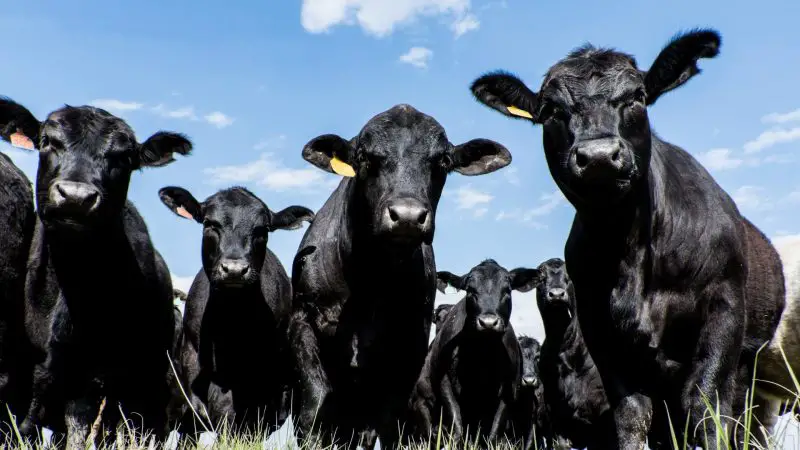
To differentiate this breed from Red Angus, it’s called ‘Aberdeen Angus’ or ‘Angus Cattle.’ Although it has a black coating, this has mothered the Red Angus. It’s a carcass breed due to its ability to produce red, lean meat marbling fat.
- Appearance: Muscular
- Lifespan: Up to 20 years
- Size: Up to 850 kg (bulls), Up to 550 kg (cows)
- Color: Black
- Characteristics: Good-natured, undemanding, adaptable, matures early
Highland
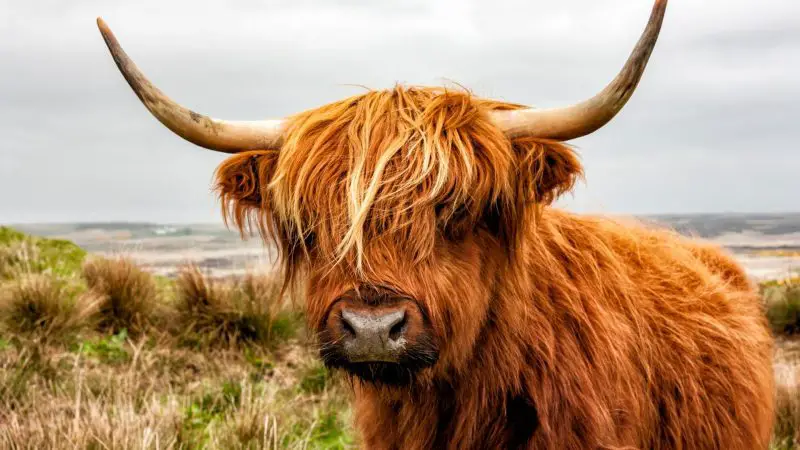
Despite being a rustic breed and native to Scotland, it finds its way to the USA. It’s used in crossbreeding to promote its best features.
Many names are used to identify this breed, such as Long-haired highland cattle, North highland cattle, and Scottish north highland cattle. Raising these cattle only requires a low feeding cost, but they still give lean meat.
- Appearance: Short and straight legs, rounded back, long pointed horns
- Lifespan: 20 years
- Size: Up to 800 kg (bulls), Up to 500 kg (cows)
- Color: White, gray, yellow, brindled, dun, red, ginger
- Characteristics: Hardy, resist intemperate conditions
Shetland
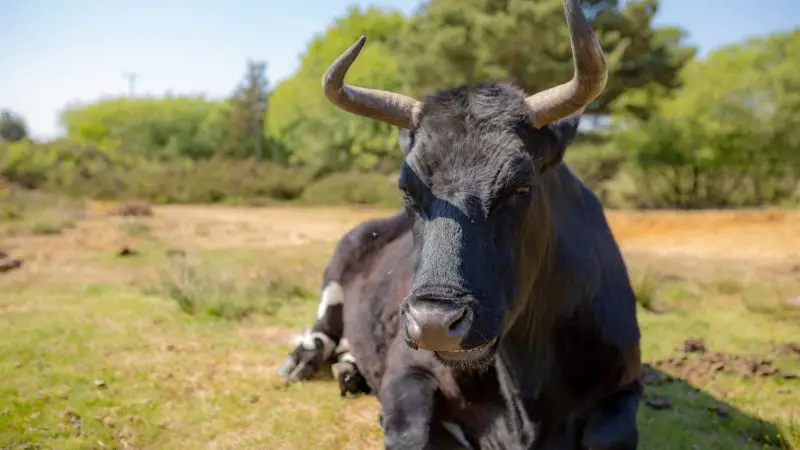
These cattle are relatively smaller than other Scottish cattle breeds. However, it’s the most difficult breed to keep.
Nonetheless, the feeding cost is minimal. The milk that comes from this cow is filled with omega 3, good fat, and CLA or conjugated linoleic acid. So, they’re raised for dairy supply.
- Appearance: Viking-style horns, long hairy coat
- Lifespan: 17 to 18 years
- Size: Up to 550 kg (bulls), Up to 350 kg (cows)
- Color: Black and white, sometimes red, grey, and dun
- Characteristics: Hardy, easy to handle, calm, high fertility
Luing
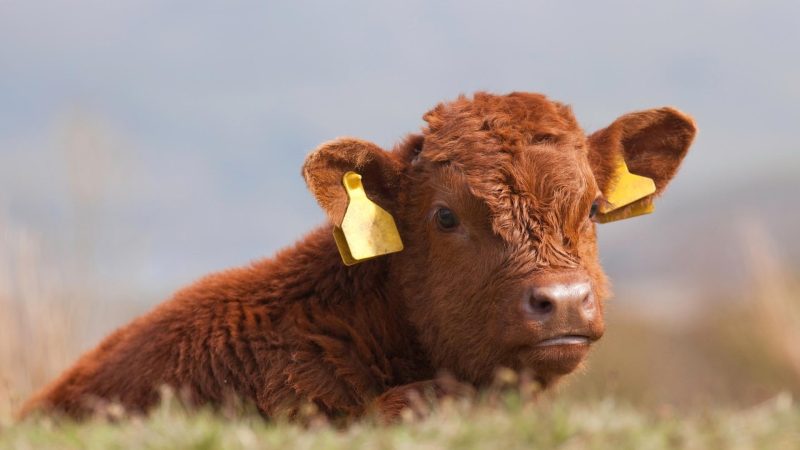
Luing was the result of combining Shorthorn bulls and Highland heifers. It’s not only common in Scotland but Canada and New Zealand as well. It gained popularity due to its well-marbled meat.
- Appearance: With good bone structure and feet, fine jaw and muzzle
- Lifespan: 20 years
- Size: Up to 950 gs (bulls), Up to 500 kg (cows)
- Color: Red and dun
- Characteristics: Hardy, a fast grower
Red Angus
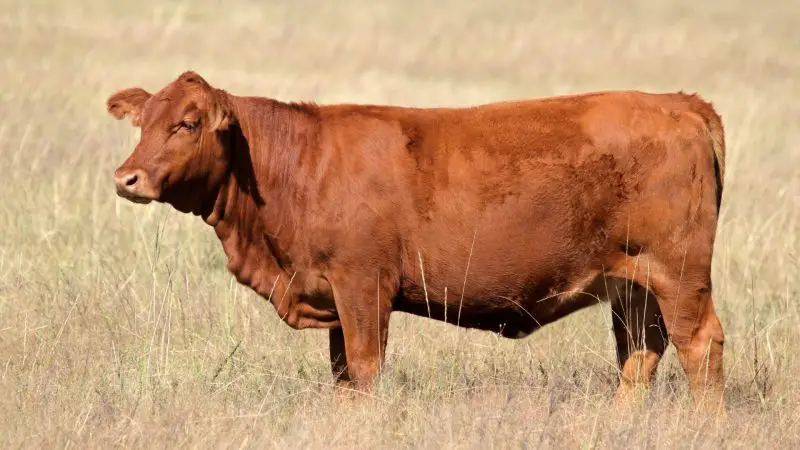
A Scottish man named Eric L.C is the breeder of Red Angus. This is a result of successful crossbreeding for enhancing the carcass and milking ability. Compared to other breeds, this one reaches puberty quicker.
- Appearance: Less hairy, polled head
- Lifespan: About 20 years
- Size: Up to 850 kg (bulls), 550 kg (cows)
- Color: Reddish brown
- Characteristics: Gentle, friendly
Ayrshire
It’s the favorite of most livestock keepers because of its awesome foraging ability. These cattle are easy to keep as they can adapt to different environments. Furthermore, they’re all-purpose as they’re for meat, milk, and dairy.
- Appearance: Less hairy, spotted coat, spectacular horns
- Lifespan: 10 years
- Size: 640 – 900 kg (bulls), 450 – 600 kg (cows)
- Color: Reddish, white
- Characteristics: Adaptable, easy to raise, hardy, easy calving
Common Cattle Breeds
Other breeds are similar to the revered Scottish cattle breeds.
Galloway
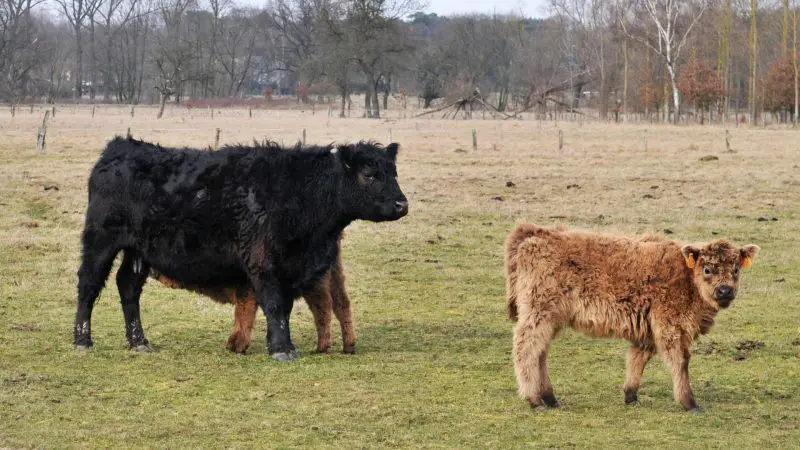
This is an ancient Scottish cattle breed that was exported to the USA and other countries due to its wonderful qualities. It was then used in crossbreeding to produce tender, juicy, and flavorful meat that is high in omega 3.
- Appearance: Soft, long, wavy hair, polled or hornless
- Lifespan: 17 to 20 years
- Size: Medium size, 770 kg – 1 043 kg
- Color: Black, brown, dun
- Characteristics: Hardy, vigorous, excellent forager, docile, courageous
Charolais
It’s a light-colored cow that’s originally from France. This breed is utilized for crossbreeding to improve the muscularity and growth of the cattle. Moreover, it does the farm work and hauls heavy loads.
- Appearance: White horns, massive, pale pink hooves, and noses
- Lifespan: 15 to 20 years
- Size: 990 kg – 1 600 kg (bulls), 680 kg – 1 180 kg (cows)
- Color: White or cream
- Characteristics: Hardy, rugged, muscular, docile
Caracu
Caracu is known as a hardy, draught animal. It also serves two purposes which are for milk and meat supply. This breed is an excellent milker as up to 2,100 kg of milk can be acquired from a single lactation. It’s also a dependable producer of quality beef.
- Appearance: Short coat, small horns and ears, strong hooves, and legs
- Lifespan: 6 to 20 years
- Size: Medium-large, 1 000 kg – 1 200 kg (bulls), 550 kg – 650 kg (cows)
- Color: Beige or light tan
- Characteristics: Extremely hardy, excellent maternal instincts, easy calving
Hereford
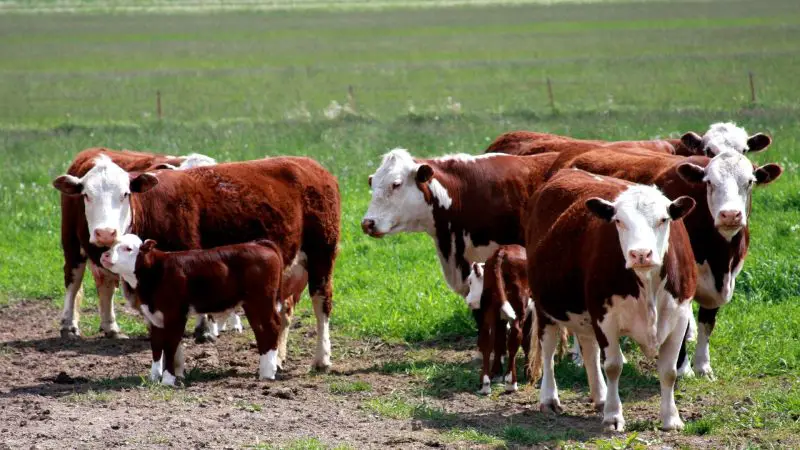
This breed can be a good milk producer. However, it’s mainly used for meat production. These cattle can live in different climates.
- Appearance: White markings and flanks, curved horns, muscular
- Lifespan: 15 years or more
- Size: Medium to large, around 1,200 kg (bulls), around 800 kg (cows)
- Color: Red-yellow to dark red
- Characteristics: Active, very hardy
Gelbvieh
Only the Jersey cattle beat Gelbvieh when it comes to the ability to reach the earliest puberty. Gelbvieh is in a moderate frame, but it grows quickly. Due to its hybrid vigor, it’s involved in cross-breeding programs for carcass quality, maternal performance, and marketability.
- Appearance: Full skin pigmentation, short coat, above-average muscling
- Lifespan: 11 years or more
- Size: Medium to large, around 1 000 kg (bulls), Up to 600 kg (cows)
- Color: Black, honey
- Characteristics: Docile, quiet temperament, easy to handle
Piedmontese Cattle
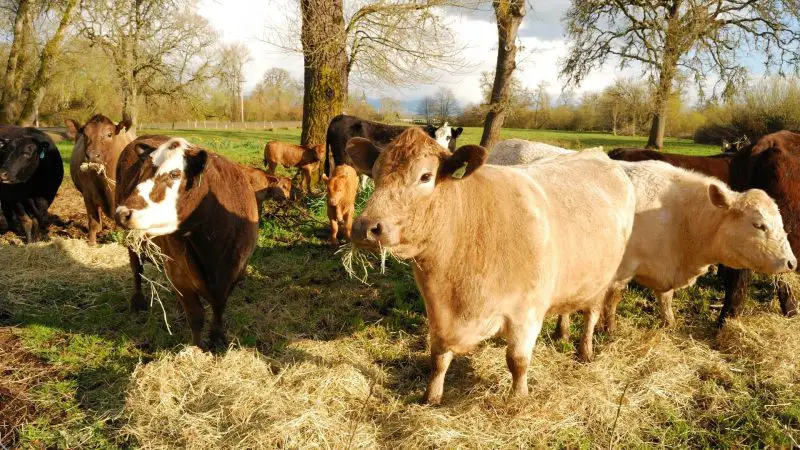
These cattle are admired for their rich milk that can create quality cheese. They are also one of the sources of premium beef. They can also work even when the hurdle is in the mountain. Breeders find this a unique breed because of its double muscling.
- Appearance: Fine bone structure, broad, muscular, black horns
- Lifespan: More than 9 years
- Size: Medium, 700 kg – 850 kg (bulls), 520 kg – 550 kg (cows)
- Color: White, wheaten with grey shading
- Characteristics: Calm, docile, high fertility
Brahman Beefmaster
The highlights in the traits of this breed are carcass abilities, excellent growth, and strong maternal traits. These cattle are tough as they don’t easily give in to heat and diseases.
- Appearance: Full wide chest, straight and slick coat, well-muscled, proportionate body
- Lifespan: 1.5 years or longer
- Size: Medium
- Color: Light red to dark red
- Characteristics: Gentle, intelligent, great to work with
What’s Special With Scottish Cattle Breeds?
- They’re consistent in providing lean, tender, and quality meat.
- The foraging skills are great since they eat plants that other cows usually ignore. They can even dig for plants under the snow using their horns.
- Most Scottish cattle breeds have a wooly covering that’s composed of oily outer hair and a downy undercoat. The thick covering is not only for unique appearance but it serves as protection from harsh weather conditions.
- Scottish cattle can withstand various climates.
Summary
What are the different Scottish cattle breeds? You didn’t only learn about the Scottish cattle breeds but cows with the same characteristics. Although Scottish cattle breeds don’t excel in milk production, they’re applauded for their lean and tender meat. Their appearance is aesthetically pleasing because of their thick coating that is not common to other breeds.
